Crazy but genius plan? Apple removes buttons from iPhone 15 in biggest change since Face ID
This article may contain personal views and opinion from the author.
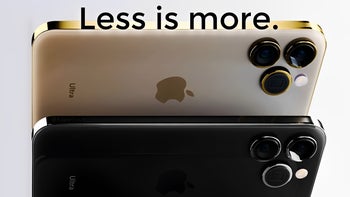
According to a number of recent reports, the new iPhone 15 series of phones will be coming without… buttons. Sort of. But while this sounds like an outlandish “Apple” thing at first glance, it might actually be the start of a new era in the way users interact with their iPhone (more about that in a bit)!
In that line of thought, although what Apple is about to do might seem totally novel, in reality the first phone that went button-less was released all the way back in 2018. Tech nerds like me and you might already know the brand and name - of course, that’s the HTC U12+.
But It’s now been nearly five years since the first and last attempt at a button-less smartphone, which is why it’s truly exciting to see what Apple can and will do with the iPhone 15 (and without buttons). Considering Cupertino’s virtually limitless R&D budget, engineering expertise, and “think different” attitude, Tim Cook & Co might just pull it off…
To put things into perspective, we can take a look at existing devices that have used similar tech - one of them is the aforementioned HTC U12+ from 2018, and the other is the 2017 Google Pixel 2.
An important distinction to make here is that the HTC U12+ had both pressure-sensitive volume and power buttons as well as Edge Sense, which gave the phone’s frame the ability to sense how hard you squeeze. The Pixel 2, on the other hand, had regular buttons but did Active Edge, which (you guessed it) meant you could squeeze the phone to perform an action.
But what we want to focus on here is the “buttons” on the new iPhone, which are likely to use tech that Apple’s already used before.
Whether we’re talking about the MacBook’s trackpad that isn’t really a surface you can press but instead sends vibration feedback, or the iPhone 7’s home button which also vibrates to make you feel like you’re pressing it, Cupertino has tons of experience in making “fake buttons”.
So, it’s almost certain that the iPhone 15 will be using similar tech in order to trick you into thinking you’re interacting with real buttons. But that being said, another possibility that might be hiding in plain sight is that Apple could be looking to give iPhone 15 similar functionality to that of your AirPods Pro!
In addition to controlling audio from the apps you use with AirPods, the stems on AirPods Pro have Force Sensors, which (you guessed it) work and feel like buttons, letting you press/swipe on them to do things like pause and resume playback, skip tracks, answer calls, and use Siri.
Again, this is my own take on how things might go down and although I don’t expect Apple to literally glue an AirPod stem onto the iPhone 15, it’s likely that Cupertino will want to make the pressure-sensitive “buttons” more special and go beyond simple power/volume controls.
So, with all that being said, and considering the iPhone 15’s new “buttons” will be similar to those of the HTC U12+, here is a quick list of features Apple might/could make possible thanks to the new pressure-sensitive tech that’s expected to give the new buttons the power of sensing how hard you press them…
It’s important to note that if “quick actions” are indeed part of Apple’s plan for the iPhone 15’s buttons, those different actions could be performed slightly differently.
The technology would likely have the ability to sense both presses and taps, but also (potentially) recognize swipes (like the iPhone 8’s home button, the MacBook’s trackpad, the AirPods’ stem), which could open the doors to dozens of new ways of interacting with iPhone 15. Furthermore, it’s likely that Apple will let users choose how hard they press the buttons and for how long.
It’s also plausible Apple could make it so that the “buttons” perform different actions based on the app you are in. For example, when in music streaming apps, the buttons could act as your standard media controls (plus play/pause/skip), but offer a completely different set of controls when you’re in the camera app. If you’re like me and like thinking ahead, a simple double-tap gesture could be used to switch controls in case you wanted to adjust your volume while in the camera app.
Although this new tech sounds exciting, you know buton-less buttons can be tricky to use because HTC has a whole instructions page on its website dedicated to helping users with that…
Virtually all HTC U12+ reviews from 2018 (including our own), said the HTC U12+’s “buttons” were often very hard to use and unreliable, which raises the question whether Apple is confident enough in its implementation to bring the new button style to millions of people around the world who’ll be spending $1,000 for a new iPhone.
But all things considered, I believe Apple’s willingness to take a risk will pay off. As I alluded in the beginning, Cupertino is working with virtually limitless resources and some of the world’s brightest engineers. Therefore, five years after the first phone with no buttons, iPhone 15 has a real shot at pulling it off properly.
But It’s now been nearly five years since the first and last attempt at a button-less smartphone, which is why it’s truly exciting to see what Apple can and will do with the iPhone 15 (and without buttons). Considering Cupertino’s virtually limitless R&D budget, engineering expertise, and “think different” attitude, Tim Cook & Co might just pull it off…
But as I eluded, the new “buttons” in the iPhone 15 will likely be hiding not one or two surprises that I’d like to talk about right now. Call it an analysis, an educated guess, or a prediction, but it seems to me the iPhone 15 could be the biggest shift in the way we use iPhone since the 2017 iPhone X.
Let’s see why…
Less buttons - more features? Return of pressure-sensitive 3D Touch tech could make iPhone 15 special
Before we discuss the way Apple might choose to utilize the power of the new “buttons” in iPhone 15, let’s explain how this tech is expected to work…
An important distinction to make here is that the HTC U12+ had both pressure-sensitive volume and power buttons as well as Edge Sense, which gave the phone’s frame the ability to sense how hard you squeeze. The Pixel 2, on the other hand, had regular buttons but did Active Edge, which (you guessed it) meant you could squeeze the phone to perform an action.
The sensor consists of a flexible printed circuit board wrapped around both sides of a line of steel chunks, with strain gauges bridging the gaps between the metal bits. As you squeeze (the Pixel 2’s frame), the outer row of gauges should be shortened, while the inner row is lengthened. This gives the Pixel software a larger absolute deflection to detect and measure to trigger the feature.
iFixIt explains Edge Sense on a more technical level
The iPhone 15’s “fake buttons” could be a combination of the iPhone 7’s home button and the AirPods controls
But what we want to focus on here is the “buttons” on the new iPhone, which are likely to use tech that Apple’s already used before.
I happen to own both a MacBook Air and an iPhone 8. In case you haven’t experienced this side of Apple’s hardware, I can reassure you that both the trackpad on the MacBook as well as the iPhone 8’s home button feel exactly like… buttons.
So, it’s almost certain that the iPhone 15 will be using similar tech in order to trick you into thinking you’re interacting with real buttons. But that being said, another possibility that might be hiding in plain sight is that Apple could be looking to give iPhone 15 similar functionality to that of your AirPods Pro!
In addition to controlling audio from the apps you use with AirPods, the stems on AirPods Pro have Force Sensors, which (you guessed it) work and feel like buttons, letting you press/swipe on them to do things like pause and resume playback, skip tracks, answer calls, and use Siri.
Here’s what the new pressure-sensitive buttons on iPhone 15 might let you do
So, with all that being said, and considering the iPhone 15’s new “buttons” will be similar to those of the HTC U12+, here is a quick list of features Apple might/could make possible thanks to the new pressure-sensitive tech that’s expected to give the new buttons the power of sensing how hard you press them…
- Play/pause/skip music and adjust volume via the pressure-sensitive “buttons” (similar to how you do it on AirPods Pro)
- New pressure-sensitive buttons could finally make launching the camera without unlocking your iPhone 15 possible; no more missed photos (fingers crossed)
- If Apple says so, you might be able to use the new pressure-sensitive buttons as a two-stage shutter key (as they should be able to recognize different levels of pressure), or even analog zoom for taking photos/videos, where you can hold down/swipe on the buttons to zoom in and out while holding the phone with one hand
- Trigger Reachability (the iPhone’s one-handed mode); currently done by swiping down on the home bar on the bottom of the iPhone’s screen (if enabled)
- Launch Siri - currently done by holding down the power button, which is a feature I’ve turned off on my iPhone, as I tend to trigger it accidentally
- Multiple Apple Pay options depending on your input (short press, long press, double, triple press, etc.)
- Physical triggers in games - although this would prove tricky due to the iPhone’s button placement (unless Apple plans to move things around or add an Edge Sense panel, similar to that of the HTC U12+/Pixel 2)
It’s important to note that if “quick actions” are indeed part of Apple’s plan for the iPhone 15’s buttons, those different actions could be performed slightly differently.
It’s also plausible Apple could make it so that the “buttons” perform different actions based on the app you are in. For example, when in music streaming apps, the buttons could act as your standard media controls (plus play/pause/skip), but offer a completely different set of controls when you’re in the camera app. If you’re like me and like thinking ahead, a simple double-tap gesture could be used to switch controls in case you wanted to adjust your volume while in the camera app.
Although the leaks we have seen so far don’t point towards a pressure-sensitive frame on iPhone 15, I wouldn’t write this possibility off. If Apple was to implement something similar (we talked about it in the beginning of the story), this could let you squeeze your iPhone to perform even more actions. How likely is it that Apple will make this happen? Probably on the lower end of the spectrum.
Apple risks making iPhone 15 less reliable; misses perfect opportunity to bring back Touch ID
Although this new tech sounds exciting, you know buton-less buttons can be tricky to use because HTC has a whole instructions page on its website dedicated to helping users with that…
Virtually all HTC U12+ reviews from 2018 (including our own), said the HTC U12+’s “buttons” were often very hard to use and unreliable, which raises the question whether Apple is confident enough in its implementation to bring the new button style to millions of people around the world who’ll be spending $1,000 for a new iPhone.
- Android’s 5 year-old button-less phone, the HTC U12+ had weak vibration feedback and often missed to register presses
- How would you turn on your iPhone 15 or take a screenshot? Haptic buttons need power to work; HTC solved this by making sure the duration of your press determined the action
- A buttonless iPhone 15 might be more water-resistant (which is a nice benefit) but harder to repair due to the technical aspect of the new buttons
But all things considered, I believe Apple’s willingness to take a risk will pay off. As I alluded in the beginning, Cupertino is working with virtually limitless resources and some of the world’s brightest engineers. Therefore, five years after the first phone with no buttons, iPhone 15 has a real shot at pulling it off properly.
Oh, by the way, although adding it to the power button of the iPhone 15 would’ve been easier than ever, it’s highly (and I mean very highly) unlikely Apple will bring back Touch ID. Such a missed opportunity, right?


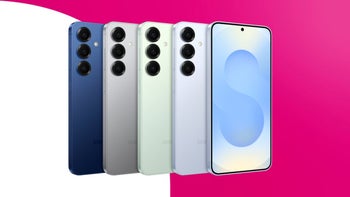
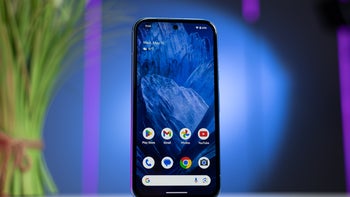



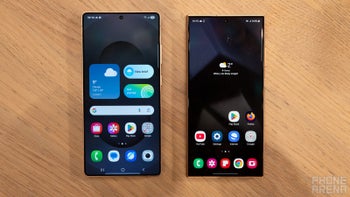
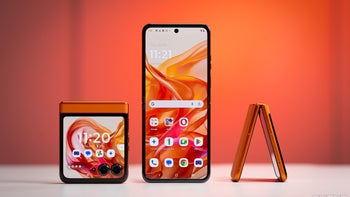


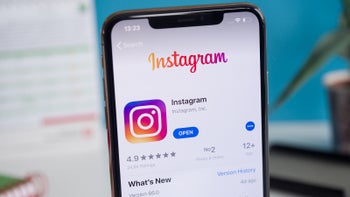
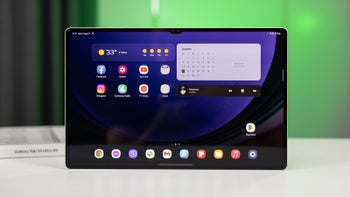

Things that are NOT allowed: